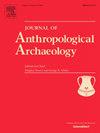整合跨收藏研究和档案研究:新墨西哥州查科峡谷金刚鹦鹉和鹦鹉的新见解
IF 2.2
1区 社会学
Q1 ANTHROPOLOGY
引用次数: 0
摘要
北美考古学越来越多地接受对现有博物馆藏品的研究,以履行长期以来的道德义务,记录精心策划的材料,并避免不必要的考古遗址挖掘。本文研究了新墨西哥州查科峡谷历史发掘的藏品,面对了基于藏品的研究的一些挑战,并展示了克服这些挑战的好处。查科是公元800年至1150年间在美国北部西南部发展起来的区域网络的中心。经常被提及的是外来金刚鹦鹉和鹦鹉的存在,它们被引入峡谷并在峡谷内饲养。然而,我们对这些鸟类的理解基础仍然不稳固。这里提出的研究整合了动物考古学的再分析,以及来自130多年考古探索的遗留数据和档案文件。它提供了经过修订的个体数量,沉积的历时和空间视角,策展实践的证据,以及对鸟类提供护理的见解。骨传记的构建将注意力重新集中到这些鸟类身上,把它们作为活生生的生物,而不是作为贸易和社会地位的杠杆。尽管通常复杂且耗时,但跨多个集合(包括人工和存档)的工作有可能从“旧”数据中提供新的见解。本文章由计算机程序翻译,如有差异,请以英文原文为准。
Integrating cross-collections research and archival study: new insights on macaws and parrots from Chaco Canyon, NM
North American archaeology is increasingly embracing the study of existing museum collections to fulfill longstanding ethical obligations to document curated materials and to avoid unnecessary excavation of archaeological sites. Working with collections from historic excavations in Chaco Canyon, New Mexico, this article confronts some of the challenges of collections-based research and demonstrates the benefits of overcoming them. Chaco was the center of a regional network that developed in the northern U.S. Southwest between AD 800 and 1150. Frequently referenced is the presence of nonlocal macaws and parrots, brought in and raised within the canyon. The foundation of our understanding of these birds, however, remains shaky. The research presented here integrates a zooarchaeological reanalysis with legacy data and archival documentation from more than 130 years of archaeological exploration. It provides a revised number of individuals, diachronic and spatial perspectives on deposition, evidence for the practice of curation, and insight into the care that birds were afforded. The construction of osteobiographies refocuses attention on these birds as living beings rather than as objects leveraged in trade and social status. Though often complex and time-consuming, working across multiple collections—both artifactual and archival—has the potential to provide new insights from “old” data.
求助全文
通过发布文献求助,成功后即可免费获取论文全文。
去求助
来源期刊

Journal of Anthropological Archaeology
Multiple-
CiteScore
4.00
自引率
11.10%
发文量
64
期刊介绍:
An innovative, international publication, the Journal of Anthropological Archaeology is devoted to the development of theory and, in a broad sense, methodology for the systematic and rigorous understanding of the organization, operation, and evolution of human societies. The discipline served by the journal is characterized by its goals and approach, not by geographical or temporal bounds. The data utilized or treated range from the earliest archaeological evidence for the emergence of human culture to historically documented societies and the contemporary observations of the ethnographer, ethnoarchaeologist, sociologist, or geographer. These subjects appear in the journal as examples of cultural organization, operation, and evolution, not as specific historical phenomena.
 求助内容:
求助内容: 应助结果提醒方式:
应助结果提醒方式:


